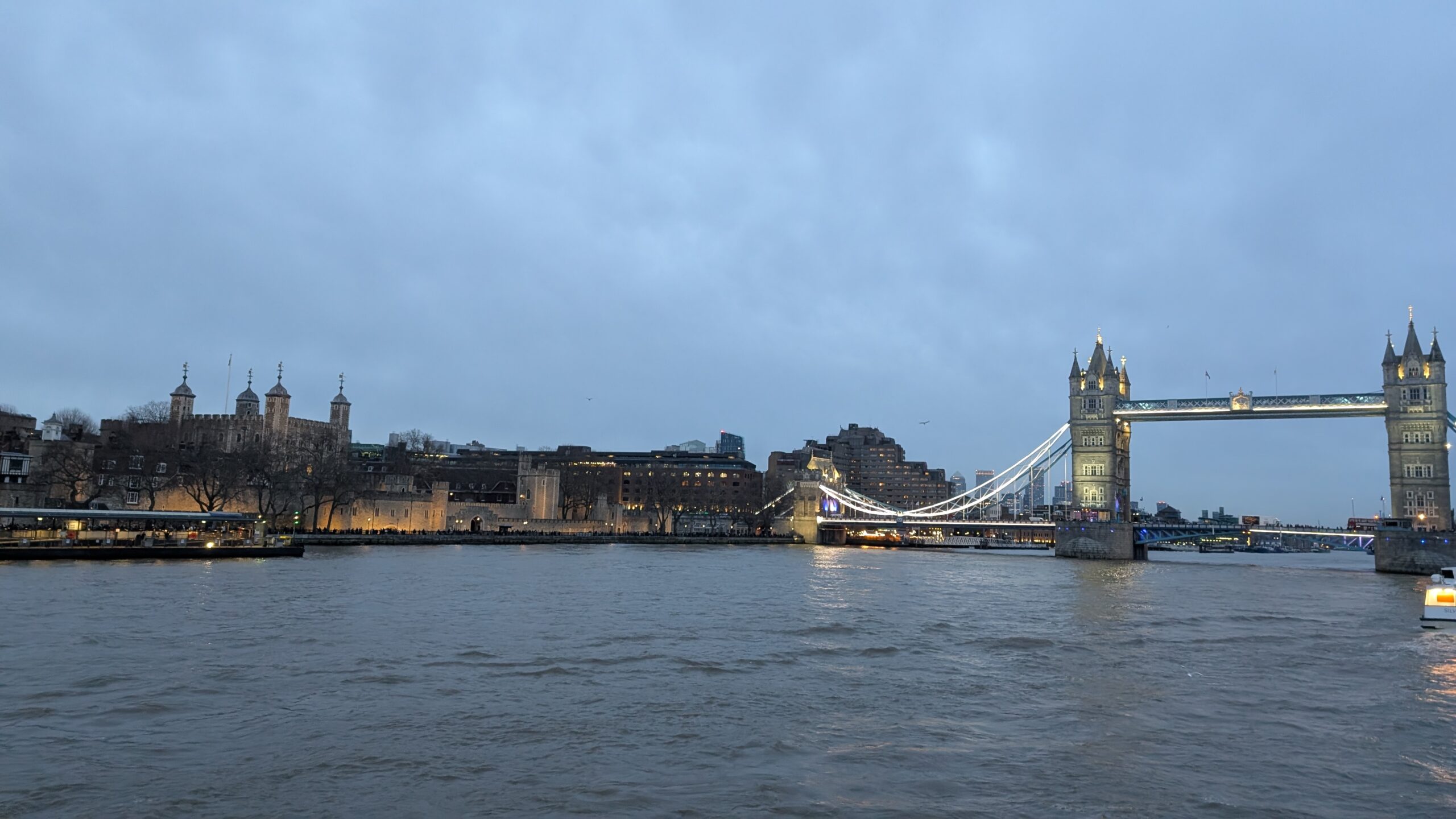We returned to London as a part of our Northern Europe Tour 2024-2025, and wanted to do some of the more “tourist” experiences – things that are unique to London. This included of course to go to the Tower of London.
Tower of London
If you plan on visiting one of the most magnificent castles in the world, and the core of London at the Tower, you should ensure that it is open before you visit. Unfortunately, we found that it is closed for a few days of the year – Christmas, New Year, and this year it was closed for two days in early January – the days we tried to go.




We missed out on seeing the 1000 year old castle, learning the history of England’s kings and queens, and having the opportunity to see the Crown Jewels. We took some photos of the outside. However, on the way, we saw a part of the original Roman wall for Londinium from the year 200, and a statue to the roman Emperor Trajan.
Tower Bridge
The bridge over the Thames opposite the Tower of London was built in Victorian times to be the most easterly crossing of the Thames. The bridge was called Tower Bridge before it was even designed, and does not get the name from the two towers that allow the bridge to open. Access to the London landmark is £13.40, and is accessible by either lift or climbing the stairs to the 42m high walkways.




We battled the crowds, which we were told by the ticket staff were low at that time of day! Climbing up the iron staircases of over 200 steps, we arrived in a large room with a video presentation of the history and background of the bridge. This was a pausing area used by the staff to ensure that the walkways did not get over crowded.




When we got access to the walkways, you can get great views along the Thames, and they have even installed small openable hatches to allow you to take photos without having to go through glass. In the walkways, there are more displays that show the history of the bridge, its construction, the lives of the people who built and died building the bridge, and information about the surrounding areas.
The main highlight of the walkways is the glass bottom that allows you to see over 40 m down to the traffic and footpath below. It was a surreal experience, as the glass is clear and smooth, and the river and road are very visible below. Bianca did not want to walk on the glass, even though there was a sign saying that six elephants can stand on the glass.




We walked along the East walkway, and then looped around to walk on the West walkway, which has a mirror above the glass floor. This adds an extra dimension to the thrill. The sliding windows that allow photos to be taken is also useful on this walkway, as it has a view over the City of London and the HMS Belfast battleship.
Tower Bridge Engine Room
We sneakily avoided the staircase down, and asked to use the lift, which returned us to the street. We walked towards the Engine Room at the South end of the bridge, and were able to see the original boilers, steam engines, accumulators, and equipment that was used to open the bridge. This was included in our ticket price, but we needed to show our ticket to gain entry to the exhibits.




Originally, the bridge would open twelve to seventeen times a day, but now it opens about eight to ten times a day. We saw the old machinery, but the new machinery is electric, much smaller, and not a tourist attraction. We left the Engine Room through the gift shop, and explored Butler’s Wharf and got some great views of the bridge from there.
Further on from Tower Bridge is The Queen’s Walk that runs along the South bank of Thames, to the West of Tower Bridge. We took a stroll past the former City Hall, and headed towards The Shard above London Bridge train station.







